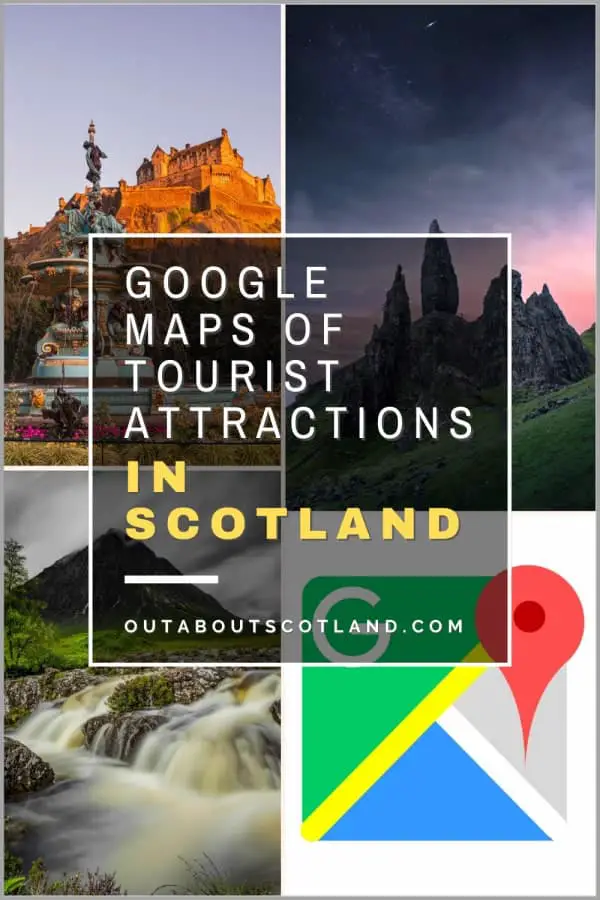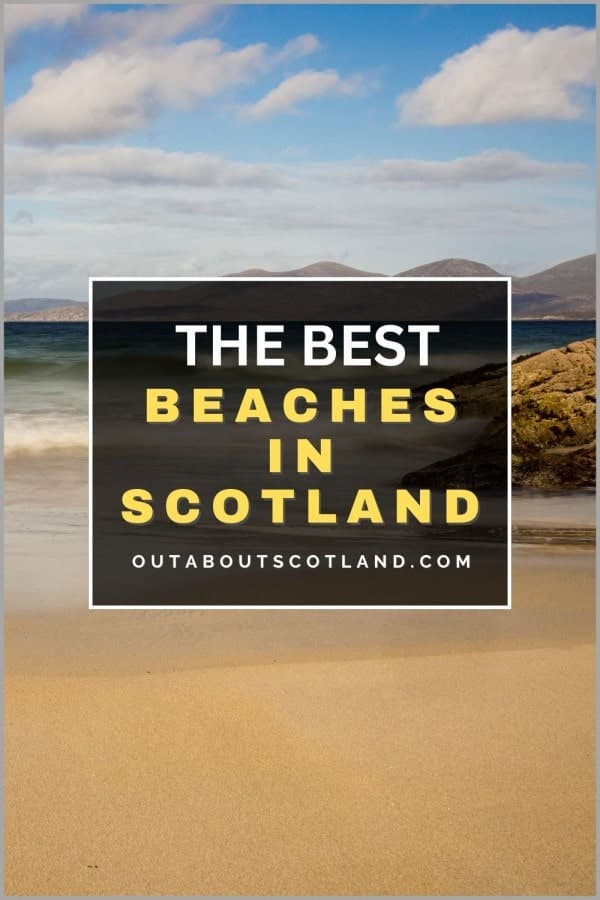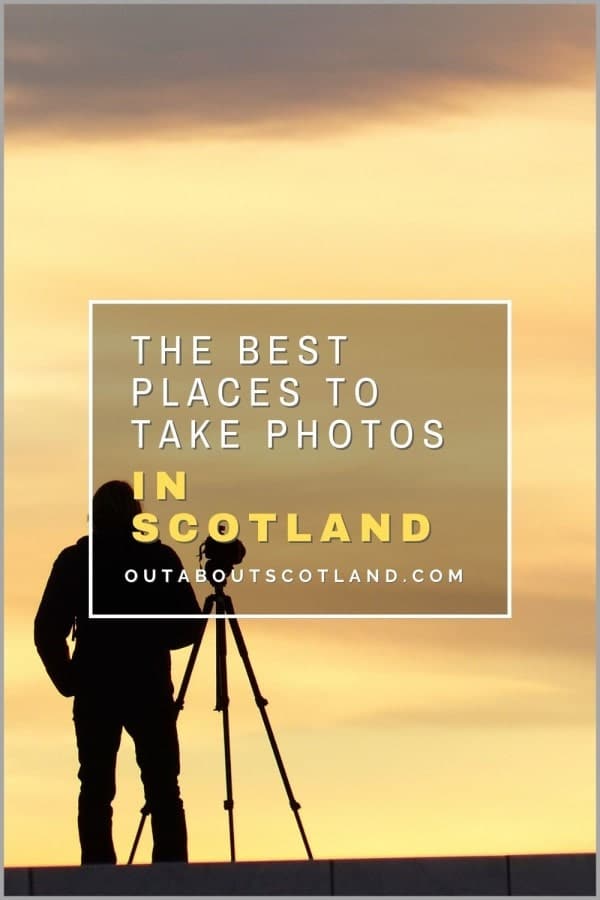Summer is widely considered the best time to visit Scotland thanks to a temperate climate that ensures mild weather from June to August, making sightseeing in Scotland during those months a truly memorable experience. In this article, you’ll discover the best tourist attractions to visit in Scotland’s cities, the Highlands, and the West Coast islands during the long balmy days of summer.
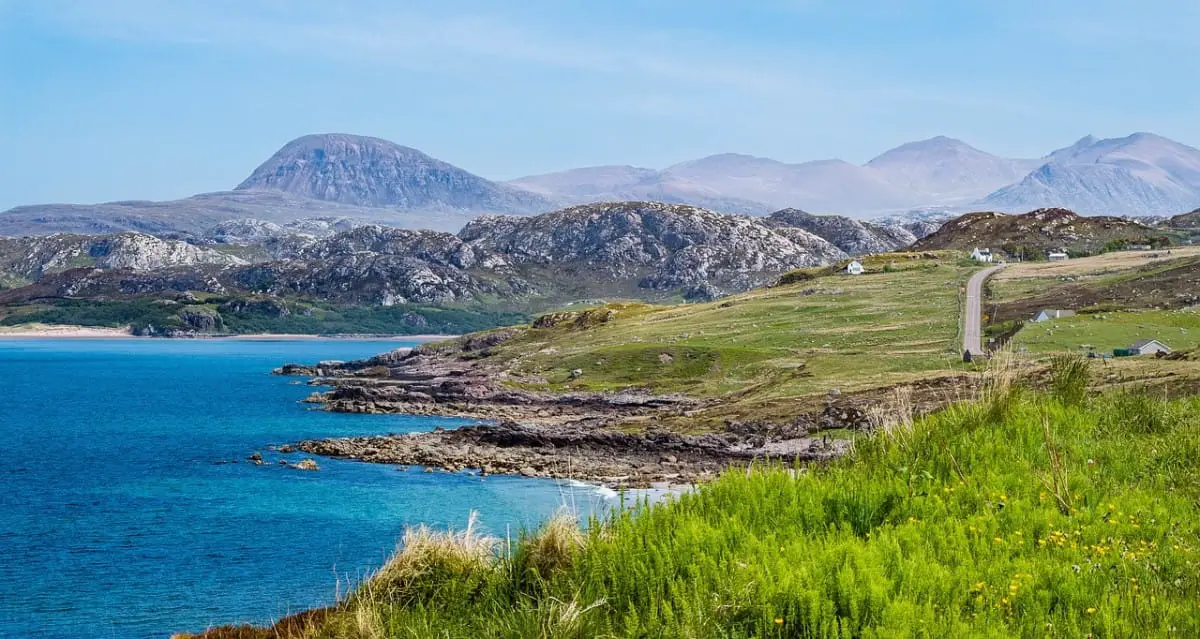
Edinburgh in Summer – Best Attractions to Visit
Edinburgh is one of the most-visited cities in Europe and is only narrowly beaten by London as the favourite destination for international visitors to the UK, but you might be wondering why it’s so highly regarded. Well, apart from the fact it’s incredibly atmospheric it has more than enough attractions to keep visitors entertained for days, if not weeks.
Monumental castle? Check. Grand royal palace? Check. Exciting city centre? Check again, with a thousand other tourist attractions thrown in for good measure. Check, and indeed, mate. Let’s take a look at a few of the city’s highlights below…
Edinburgh Castle
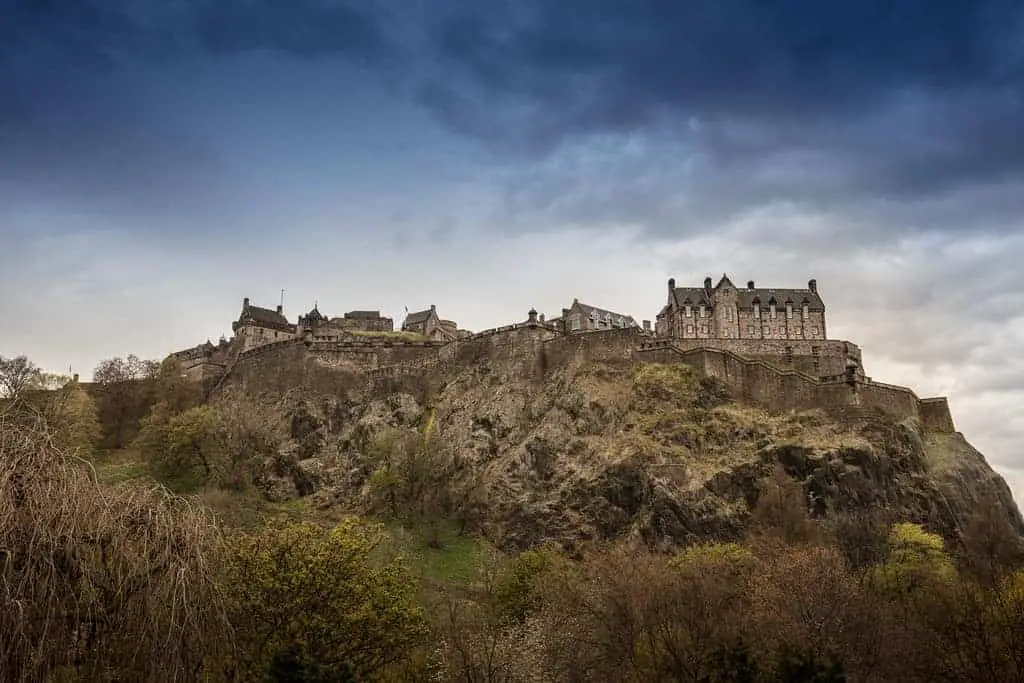
Address: Castlehill, Edinburgh, EH1 2NG
Visitor Guide: Edinburgh Castle: The Complete Guide
Edinburgh Castle has been the focal point of the city for the best part of a thousand years and it continues to attract people to this day, with over 70% of Scotland’s tourists claiming a visit to the castle is their top priority. In fact, Edinburgh Castle is officially the most-visited attraction in Scotland, with annual visitor numbers exceeding 2 million people. 2 million! No wonder the queues are so horrendously long in summer.
Even so, if you can brave the crowds you’ll find a lot to look at when you visit and it’s big enough that you could spend the majority of your day there if you explore every nook and cranny (which goes some way to justifying the expensive entry tickets I guess).
Highlights of this historic attraction are the Argyll Battery in the main courtyard near the entrance where the famous One O’Clock Gun is fired daily – at 1 pm no less… – and the Palace Yard where you’ll find the enormous cannon known as Mons Meg.
The oldest building in Edinburgh can be found next to Mons Meg which is a private chapel built by King David I, and a bit further round lies the Half-Moon Battery where the iconic lone piper plays his sombre tune during the spectacular Edinburgh Military Tatoo each year in August.
The castle is managed by Historic Environment Scotland which has done a great job of installing information displays and there are staff members on hand to help you make the most of your visit, but I recommend asking them for directions to the Royal Palace before you do anything else.
The palace gets extremely busy from mid-morning onwards in summer, but you’ll miss most of the crowds if you get there early, and by doing so, you’ll be able to view the Honours of Scotland (the nation’s crown jewels) and the former Royal Apartments at your leisure.
Head across the courtyard and you’ll find the National War Memorial, where memorials to Britain’s armed forces are held, with the Great Hall directly opposite and the Queen Anne building joined to its side. The Great Hall contains a collection of weaponry, including the huge Scottish Claymore, and the Queen Anne building is the location for a very good café and a restaurant.
Holyrood Palace
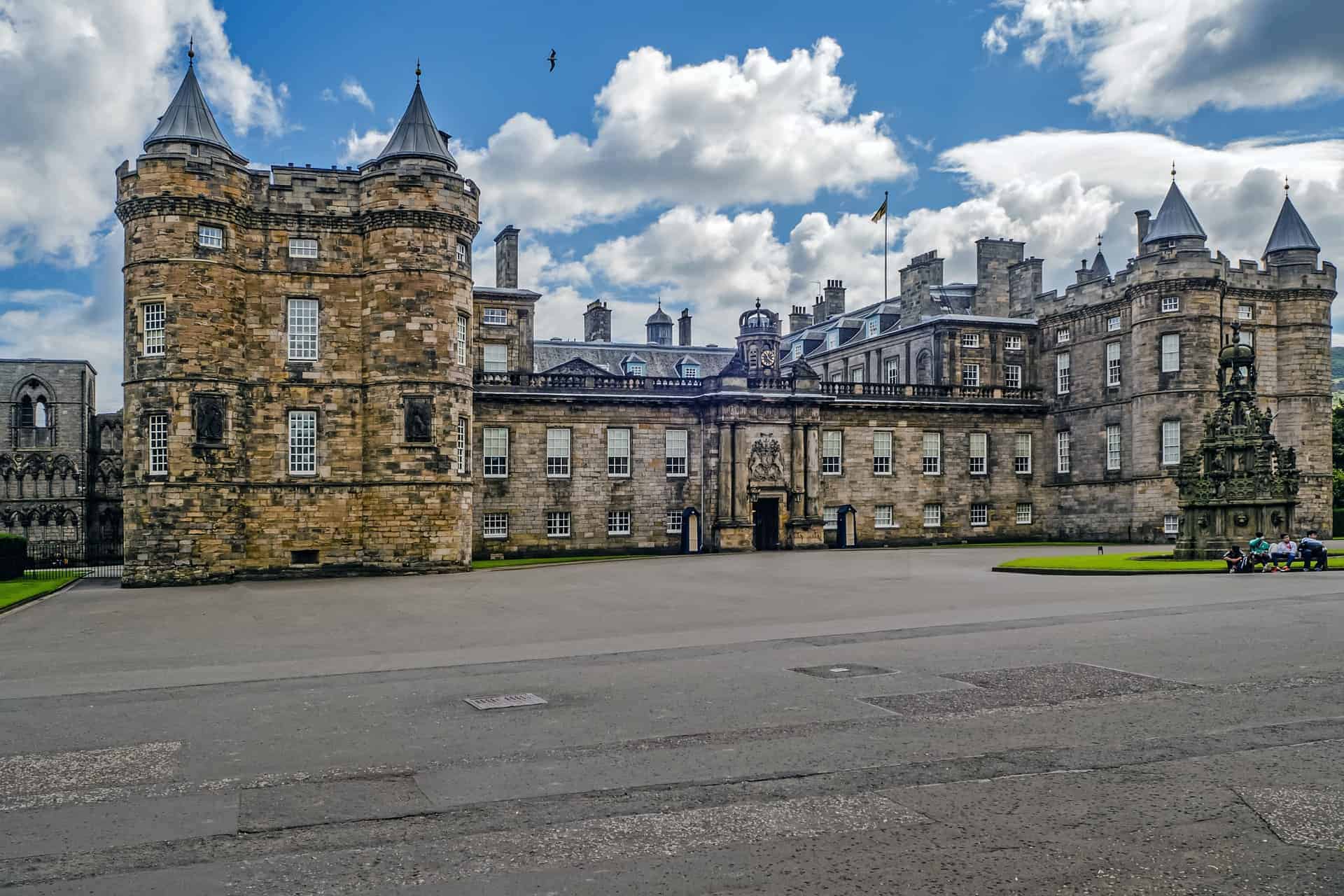
Address: Canongate, The Royal Mile, Edinburgh, EH8 8DX
Visitor Guide: Holyrood Palace: The Complete Guide
Holyrood Palace lies at the bottom of The Royal Mile, the medieval high street that connects the castle at the top to the palace at the bottom. If you’re in Edinburgh then you’ll inevitably end up on The Royal Mile at some point as it’s the main tourist attraction for the Old Town – a UNESCO World Heritage Site that’s one of the best examples of 15th-century architecture in Europe.
Holyrood Palace is the official residence of the British monarchy in Scotland and just like Buckingham Palace you can explore many of its rooms on a self-guided tour. Highlights include the King’s bedchamber in the east wing and the Great Gallery, with the former featuring a fine collection of antique furniture and the latter showcasing an impressive gallery of paintings.
But a visit to this historic attraction doesn’t have to centre around the buildings because the Royal Gardens are worth a visit on their own, and they offer a great opportunity to soak up the summer sun. The gardens are enormous andovely place to wander around, especially with the dramatic peaks of Holyrood Park forming a backdrop.
Heading back inside, you’ll notice the northwest tower is a favourite with many tourists as it’s the section of the palace where Mary Queen of Scots took residence, and the rooms are full of tapestries, paintings, and artefacts from the time of the doomed queen.
If you want to see even more artworks I recommend heading to the Queen’s Gallery near the palace entrance where for a small additional fee you’ll get to see masterpieces not found anywhere else in Britain, with a bonus being that the exhibitions are rotated regularly so there’s always something new to see on a later visit.
While initially seeming a bit pricey the entry tickets are decent value because they’ll allow you free re-admittance for one year – which is great if you intend to return to the city. My top tip with the tickets is to purchase a ‘Royal Visit’ pass which includes admission to the Palace, the Queen’s Gallery and a garden tour – more than enough to keep you occupied for most of the day.
Holyrood Park

Address: Queen’s Drive, Edinburgh, EH8 8HG
Visitor Guide: Holyrood Park: The Complete Guide
It’s summer in Scotland, you’re in the sweltering (ok, maybe not that hot… how about mildly warm?) capital, and you don’t want to venture inside stuffy old buildings. Where should you go? The answer to that has to be Holyrood Park, the 650-acre green space located in the heart of the city.
Holyrood Park is a mini version of the Scottish Highlands and it’s a great place to get away from the noise of the city centre on a warm summer’s day.
You can wander around its spiderwebf paths and view its Highland landscape at your leisure, but the highlight has to be climbing to the top of the 800-foot-high Arthur’s Seat for panoramic views of the city. It’s a bit of a scramble in places, but it’s well worth the effort, so if you feel like a bit of exercise, I suggest taking the most direct route, which is to head east from Dunsapie Loch and follow the well-worn path to the top.
Once you get there, you’ll find a trig point on top of a rocky plateau with gorgeous views in every direction. If you get there mid-day, I guarantee you’ll be stuck amongst crowds of tourists as it’s such a popular place to visit, but make the climb before 10 am and you might find you’re the only person there (it’s also quieter after 5 pm when most tourists are heading back to their hotels).
The easiest way to get to the park is to walk down The Royal Mile to Holyrood Palace with the Scottish Parliament building on your right. Holyrood Park is dead ahead with the rising cliffs of Salisbury Crags winding away to the right, and there’s another footpath under the crags known as the Radical Road which winds its way through the park to rejoin the Queen’s Drive road on the other side.
There’s no right or wrong way to explore the park but I’ve included a mini-trail in my Holyrood Park Guide that you might find useful.
Glasgow in Summer: The Best Attractions to Visit
Glasgow sums up everything that’s great about Scotland. Friendly people, beautiful green spaces, stunning buildings and more tourist attractions than you can poke a selfie stick at. Plus all the best ones are completely free. But there’s more to this city, which is the largest in Scotland, than tourist attractions.
While Edinburgh is infuriatingly obsessed with separating money from people’s wallets, Glasgow is all about offering great experiences, and you’ll find some of the best shopping in the country within its long, meandering streets that are home to many of the finest bars and restaurants in the British Isles.
There is a buzz about the city that is exciting, and new visitors are practically begging to explore it. The following suggestions for places to visit will give you a good taste of what this amazing city has to offer.
Kelvingrove Park
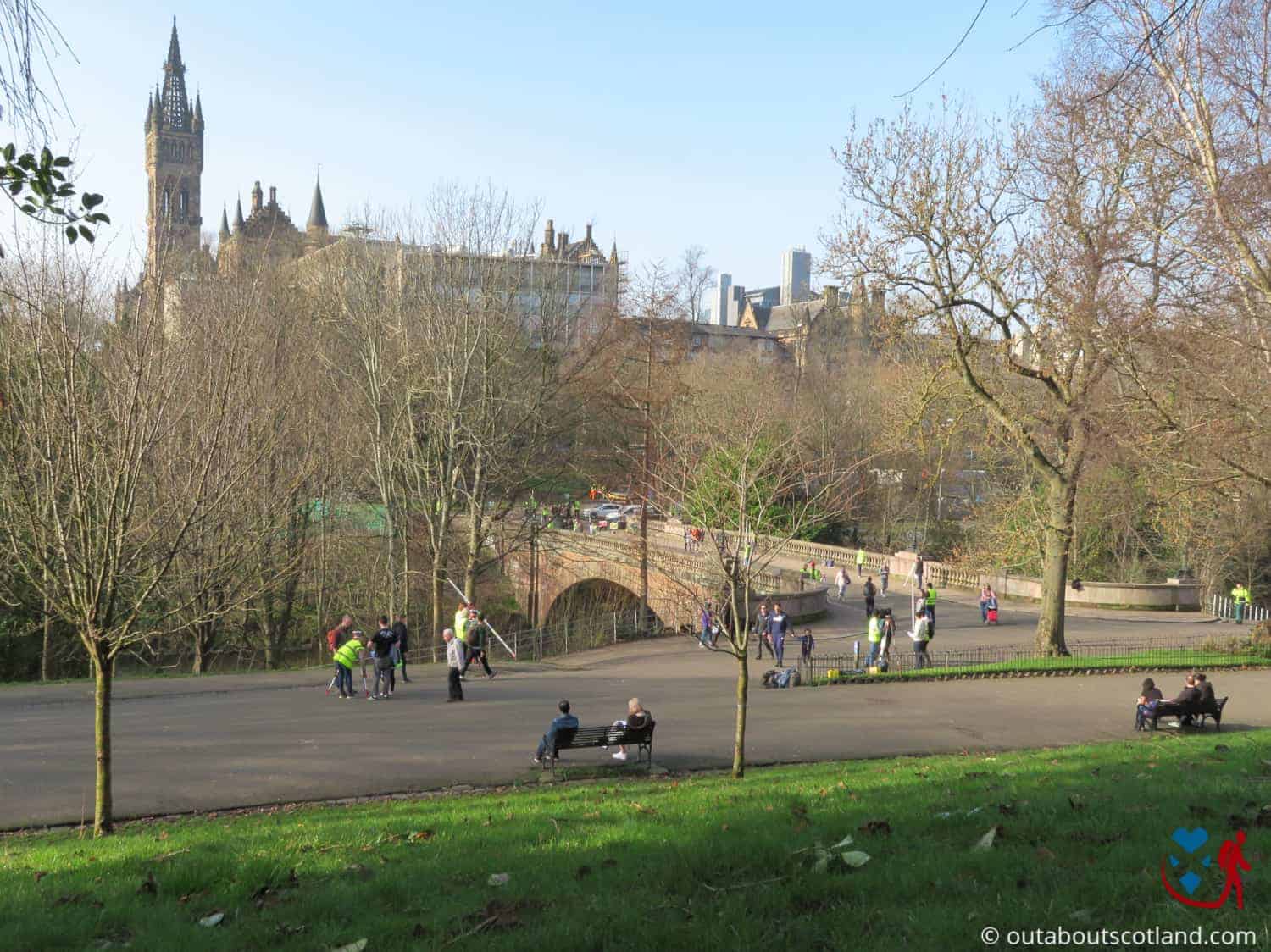
Address: Argyle Street, Glasgow, G3 8AG
Visitor Guide: Kelvingrove Park: The Complete Guide
Kelvingrove Park covers an impressive 85 acres in the heart of Glasgow and it’s one of the city’s most-used public parks after Glasgow Green.
Many people go there to explore Kelvingrove Art Gallery and Museum which sits on the southern side of the park, but if you’ve already looked at Google Maps, you’ll know that Glasgow University with its Hunterian Museum is a short distance away to the west, so it’s easy to combine the park, Kelvingrove Museum, and the Hunterian Museum in one attraction-filled day.
Aside from the fact that each attraction is free, you’ll get to experience the highlights of Glasgow without having to walk very far – something that’s worth considering if you’re already wilting under the heat of the summer sun.
Kelvingrove Park has a network of paths running through it that makes you forget you’re in the middle of Scotland’s biggest city, with the Kelvin Walkway being a particular favourite with locals and visitors alike. This riverside walk follows the River Kelvin from the museum along 10 miles of meandering paths to the picturesque Milngavie countryside on the outskirts of the city which is home to geese, kingfishers, foxes and otters.
It’s a beautiful walk, but if you’d rather stay within the confines of the city centre, you can stay in the park and go on a wee expedition to see all the sculptures dotted about it. There are lots of monuments in Kelvingrove Park, but if you’re short on time, I suggest you at least take a look at the Stewart Memorial Fountain near the Kelvingrove skatepark and the west play area.
The fountain was built in 1872 to commemorate a new freshwater supply from Loch Katrine over 40 miles away, and it’s a popular spot for locals to sit and relax when the sun’s beating down. Take a look at the Kelvingrove Park article to find out more about the fountain.
Glasgow Necropolis
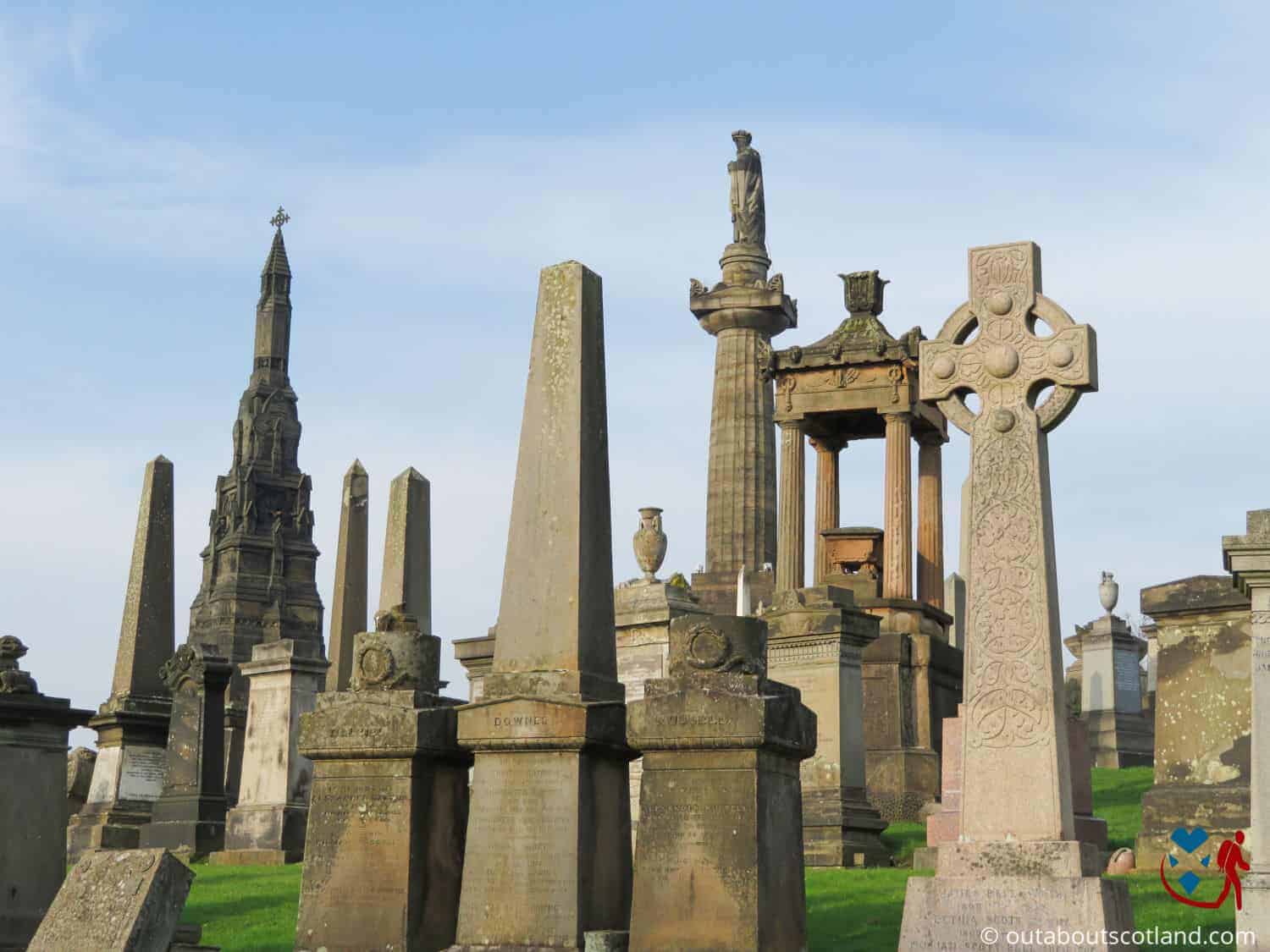
Address: Cathedral Precinct, Castle Street, Glasgow, G4 0QZ
Visitor Guide: The Glasgow Necropolis: The Complete Guide
Yeah, I know, a bit of a weird one if you’re visiting Glasgow in the middle of summer, but I have to recommend the city cemetery as a top tourist attraction. The Glasgow Necropolis is a 37-acre burial site next to the city’s beautiful cathedral, and the fact that it’s so close to both the cathedral and the St. Mungo Museum makes it a great place to go for a stroll if the weather is changeable.
This cemetery was originally a Victorian arboretum that was designed to be used by the city’s ever-expanding middle class, but by the 1830s, the city’s council decided to convert it into a burial site instead.
If you’ve ever had the chance to explore the vast Pere Lachaise cemetery in Paris you’ll immediately recognize the Necropolis because it was designed to imitate it, and having been to both I reckon the designers of Glasgow’s Necropolis did a great job.
A network of paths runs through the site between a labyrinth of tombs and gravestones that mark the final resting places of some of the greatest Scots that have ever lived, including Charles Rennie Mackintosh (architect), Charles Tennant (industrialist), and John Knox (who’s actually buried in Edinburgh).
The Knox monument sits at the highest point in the Necropolis where you’ll get a fantastic panoramic view of the cathedral and the myriad adjoining streets. If you want to find out about both Knox’s monument and all the other gravestones dotted about there is a 2-hour guided walking tour where you’ll learn lots of interesting facts about them.
The Riverside Museum of Transport
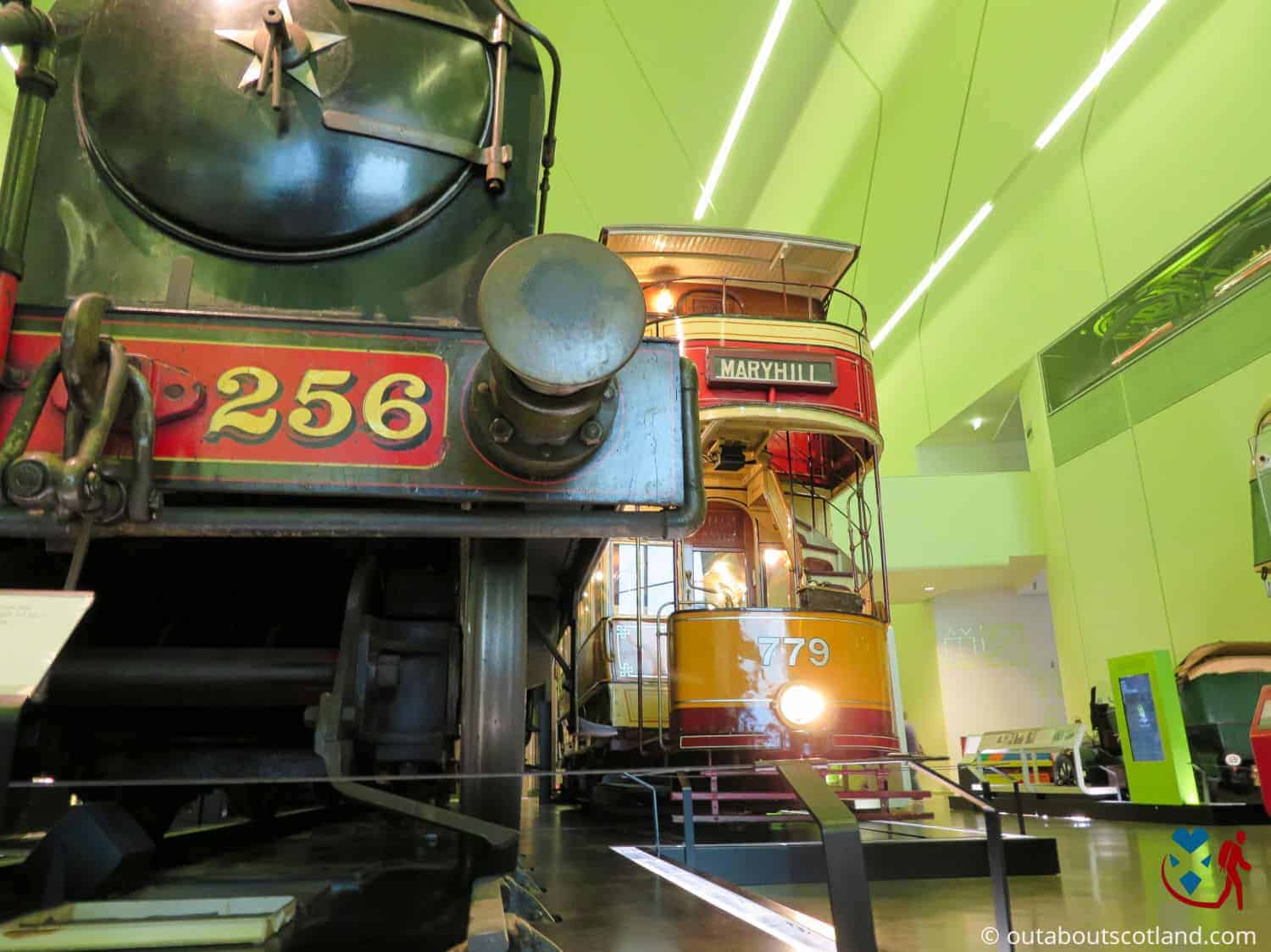
Address: Pointhouse Place, Glasgow, G3 8RS
Visitor Guide: The Riverside Museum of Transport: The Complete Guide
I was debating about adding the Riverside Museum to this list as it’s an indoor attraction and this is an article about places to go in the summer, but I’m including it because it’s a superb tourist attraction and it’s completely free to visit. I’m also including it because the museum is located next to the River Clyde, and it’s always nice to be near water when it’s hot, but the museum has another much-appreciated bonus.
Moored up on Pointhouse Quay is The Tall Ship, a fully restored 19th-century sailing ship that’s one of the last examples of a Clyde-built ship still afloat today. The Tall Ship is a grand old vessel that’s full of fascinating maritime memorabilia and it’s worth making the journey to the transport museum just to see it.
The Riverside Museum of Transport meanwhile is dedicated to the world of transport (well yeah, obviously…) and it’s crammed to the rafters with every type of vehicle you can possibly think of. From roller skates to mopeds, sports cars to trains, and everything in between, the Riverside Museum takes you back in time to explore their origins and show you restored examples of each one.
During your visit, you’ll see oddities like the Sinclair C5 and ultra-cool retro gear like the Raleigh Chopper, so your inner child will be kept well and truly satisfied with the exhibits on display.
If you’re a car fanatic you’ll love a visit to this museum mainly because they’ve got an entire wall-mounted display with some of the most iconic cars from the last hundred years on show. But the highlight is the recreation of an entire old-world Glasgow street complete with shops, a subway, and a good old-fashioned spit-and-sawdust boozer.
The Highlands in Summer – Best Attractions to Visit
If you’re coming to Scotland in summer you probably don’t need me to tell you to visit the Scottish Highlands. The northwest of Scotland is a spectacularly pretty place with more mountains, glens and lochs than your camera is going to be able to cope with, especially once you get to areas like Glencoe and the Cairngorms National Park.
There are so many places to visit in the Scottish Highlands that it’s impossible to list them all in one article, so I’ll just give you a couple of options that I guarantee will blow your socks off. I’ve included a mountain that’s surprisingly easy to climb, a loch next to the country’s most popular snow sports mountain range, and another loch that has a monster in it (guess which loch that is…).
Bidean Nam Bian
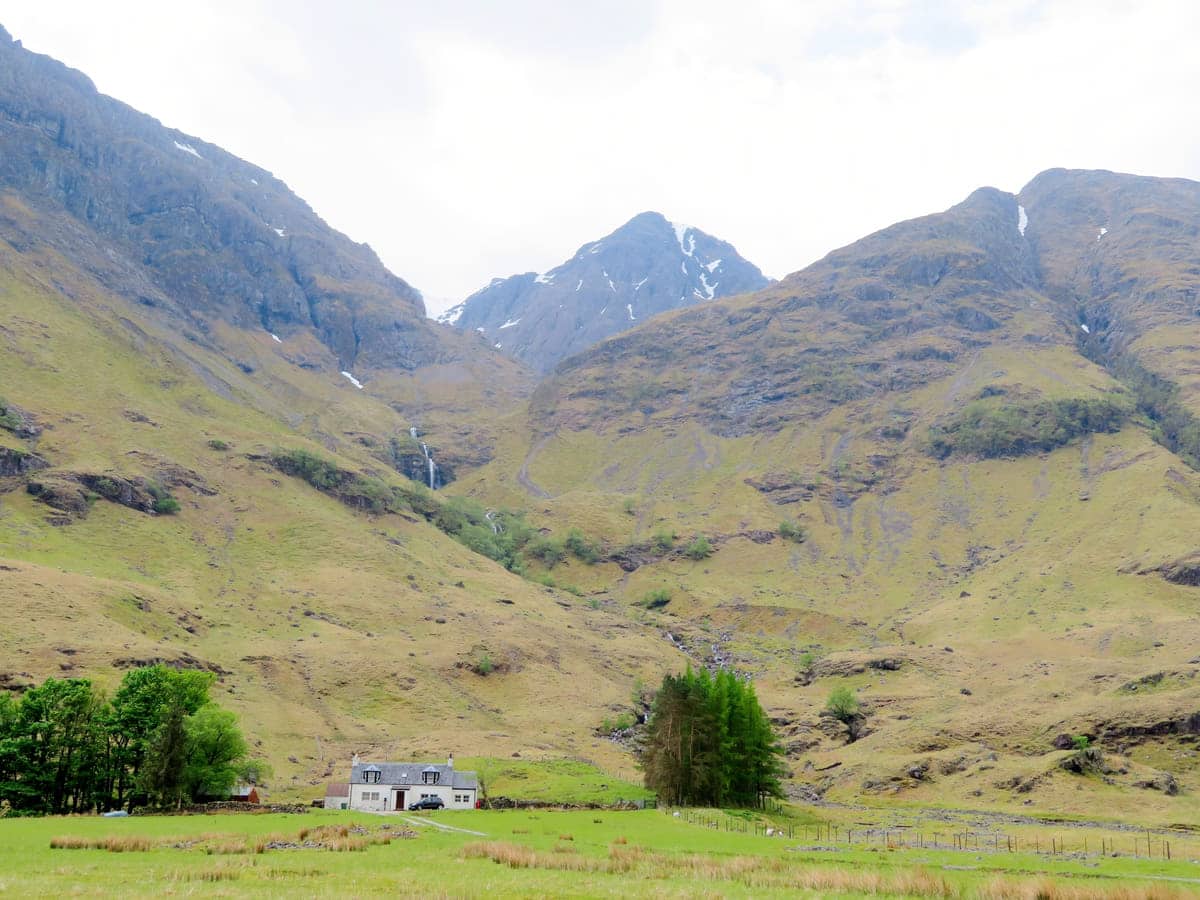
Address: Glencoe, Argyll, PH49 4HX
Visitor Guide: The Glencoe Visitor Centre, Bidean Nam Bian Complete Guides
If you want to experience the best sights in Scotland you have to visit Glencoe, and while you’re there you won’t get a better experience than hiking up Bidean Nam Bian. This Munro rises to 1,150 metres at its highest point and offers what I believe is one of the finest views in Scotland, with a mountain landscape that’s nothing short of breathtaking in every single direction.
The breathtaking sights begin at the parking lot tucked away on the shore of Loch Achtriochtan, a small freshwater loch that receives its water from the River Coe. The loch is exceptionally pretty thanks to the mountains that surround it, including the Three Sisters, the mountain range that includes Bidean Nam Bian,located to the south.
There’s a path running from the car park right up to the summit, but it has to be said it’s a bit of a scramble in places, so getting to the very top isn’t a task for the faint-hearted. But if you’re after a nice alpine-style hike, you can easily get three-quarters of the way up and still enjoy the beautiful view.
One word of warning, though. As pretty as the 2 1/2-mile walk up the Munro is, it gets very busy in the the summer, especially at the weekend. There are frequent coachloads of tourists stopping at the Loch Achtriochtan car park to take photos, and it can be a bit of a pain trying to park up, let alone make your way through the crowds meandering around the base of the Three Sisters.
My advice, therefore, is to start the ascent in the morning mid-week and enjoy the mountain landscape in peace and quiet. You might then have time to head a few miles west on the A82 to explore the area surrounding the Glencoe visitor centre later in the afternoon.
Loch Morlich
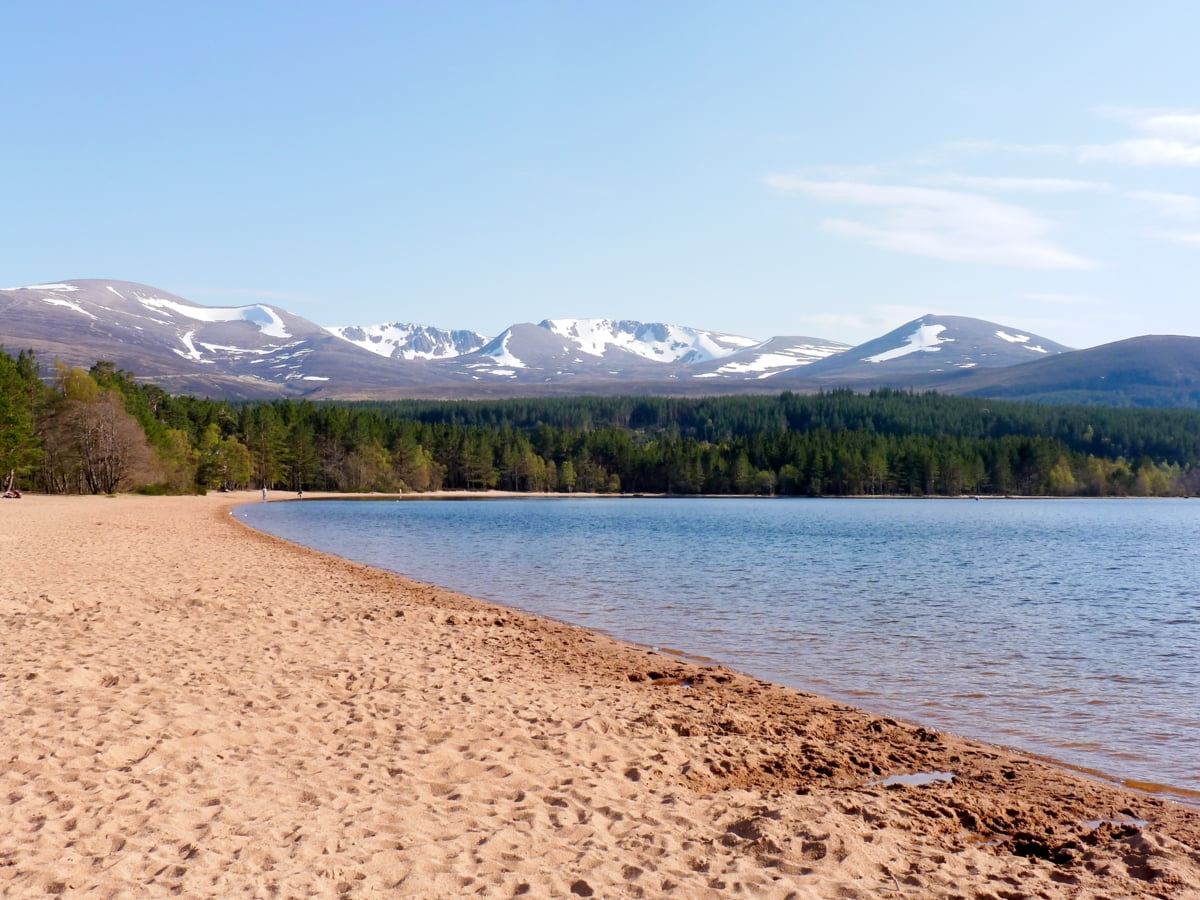
Address: Loch Morlich, near Glenmore village, PH22 1QU
Visitor Guide: Loch Morlich: The Complete Guide
Another region of the Highlands that’s worth exploring is the Cairngorm range near Aviemore. While I could have just included the Cairngorm centre in this list I thought I’d add a place that seems to be virtually unheard of amongst Scotland’s tourists.
Loch Morlich is located deep in the heart of Strathspey, just a few miles from Aviemore, where it’s hidden on all sides by the expansive Glenmore Forest.
The first time I visited, I was completely blown away by the place because not only is it gob-smackingly beautiful,but it also has one of the nicest beaches I’ve ever set foot on. And that’s not what you’d expect to find in the middle of Scotland’s premier snow sports destination.
This is a real adrenaline junkie’s dream location, with the ski slopes of Cairngorm so close you feel like you can reach out and touch them and the forest buzzing with the sound of high-energy mountain bike trails.
You don’t have to be a sports lover to enjoy the area because Loch Morlich is practically begging you to slip your shoes off, lay a towel down, and relax on the beach. And all with a vast snow-capped mountain range as a backdrop. The beach, the highest in the UK, features spotless golden sand that rivals any other in Britain, in my opinion, and it’s also the location of the Loch Morlich Water Sports Centre.
The centre runs frequent instructor-led sessions for sailing, windsurfing, kayaking, and paddle boarding, and they also hire equipment out if you’re already proficient, with wetsuits, row boats, kayaks, and canoes available for a reasonable price. Loch Morlich is also a good place for wild swimming if you can face the cold water, but if you’d rather go for a dip somewhere away from the crowds, I recommend checking out the Wild Swimming website.
Loch Ness
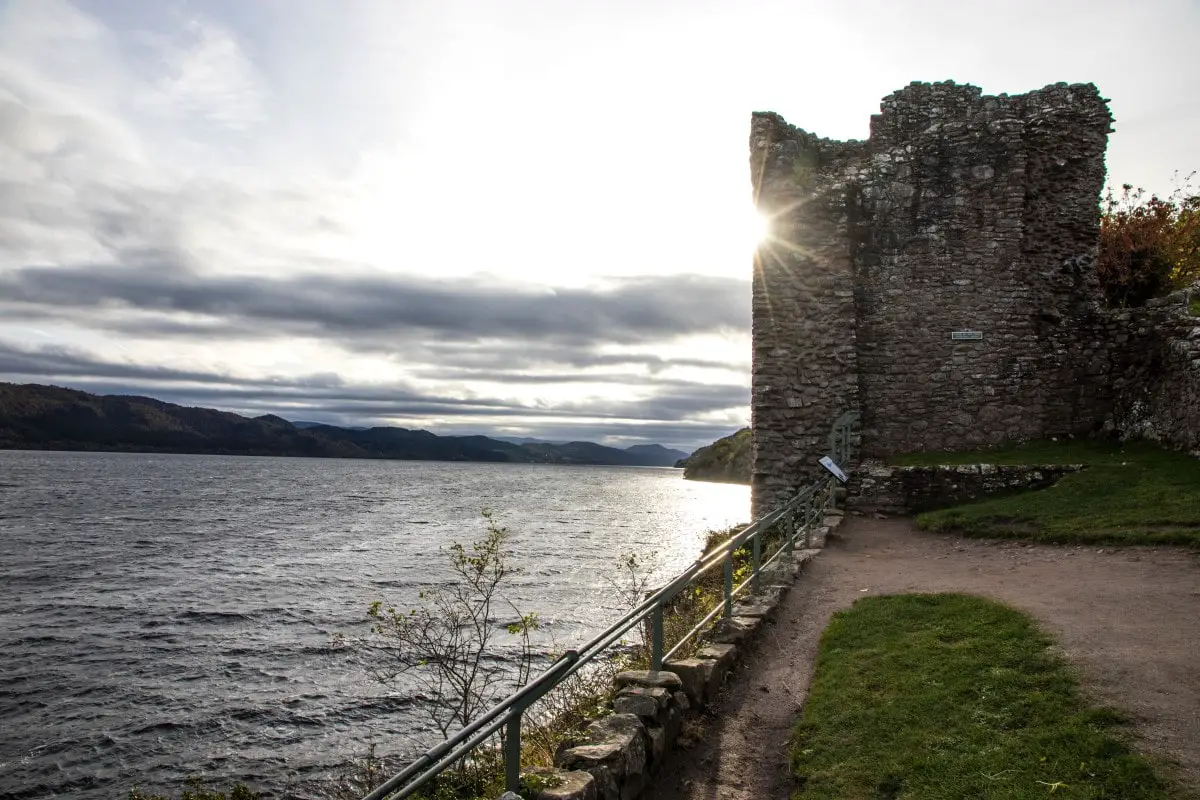
Address: Fort Augustus, Highland
Visitor Guide: Loch Ness: The Complete Guide
I defy anyone to say they’ve never heard of Loch Ness, the watery home of the mythical monster that has been sighted for almost a thousand years (check out my Loch Ness monster article for an in-depth guide to it).
This enormous body of fresh water is the biggest in the UK—ig enough, in fact, to contain all the water from all the lakes of England and Wales combined! Even at 23 miles in length, it’s not the biggest loch by surface area (that crown goes to Loch Lomond), but it is the largest by volume because it’s so deep, reaching an incredible 230 metres (750 feet) in places.
Once you visit it you’ll understand why it has a legendary monster as it’s very atmospheric, helped no end by the impenetrable peat-stained water. If there ever was a monster in Scotland I can’t think of a better place for it to live. It’s a bit of a shame then that so many people fixate on Nessie and seem to forget about the loch, which to my mind is the most attractive in Scotland.
There are two major settlements at either end of Loch Ness so you’re never really that far from civilization but walking along its banks can make you feel like you’ve gone completely off-grid. Well, at least until the streams of motorbikes on the A82 bring you back to reality.
Those bikes typically travel from Fort Augustus in the south to Inverness in the north, with barges also using Fort Augustus as they travel along the Caledonian Canal. Inverness, meanwhile, is a lovely city that has plenty of attractions of its own, and it’s the first place people head to when they want to explore the Moray Firth.
If you have the time while you’re visiting Loch Ness, you might want to catch one of the tour boats that sail out of Inverness to go dolphin-watching on the Firth. It’s a fantastic experience.
Midway between Fort Augustus and Inverness is the most iconic castle in Scotland – Urquhart Castle. This castle held one of the most strategic locations in the Highlands and was the focus of military activity for hundreds of years, so it’s a shame it was partially destroyed in 1692. Still, what remains is an utterly fascinating place to explore and standing on the remains of the castle to look out over Loch Ness is a truly remarkable experience.
Scotland’s Islands in Summer: The Best Attractions to Visit
We’ve looked at Scotland’s main cities and the Highlands, but there’s another destination that’s perhaps an even bigger draw for summer visitors – the islands. There are more than 900 islands off the coast of Scotland, but the largest are divided into 4 groups: the Shetlands, Orkney, the Inner Hebrides and the Outer Hebrides.
I won’t go into detail about the Shetland Islands and Orkney as the weather can be very changeable even in summer, so instead I’ll concentrate on the Inner Hebrides which tend to have a similar climate to the mainland.
Even within the Inner Hebrides, there are a huge number of places to visit, but many of them are either too difficult to get to or offer too few activities. Others, meanwhile, are so busy that summer accommodation prices skyrocket to extortionate levels (looking at you, Isle of Skye).
One of the wonderful things about the islands listed below is that there are so many things to see and do that you could quite easily spend a week on each one and have a totally different experience, whether it’s lounging around on a golden sand beach, climbing to the top of a dramatic mountain, or cycling along a stunning coastal road.
Isle of Mull
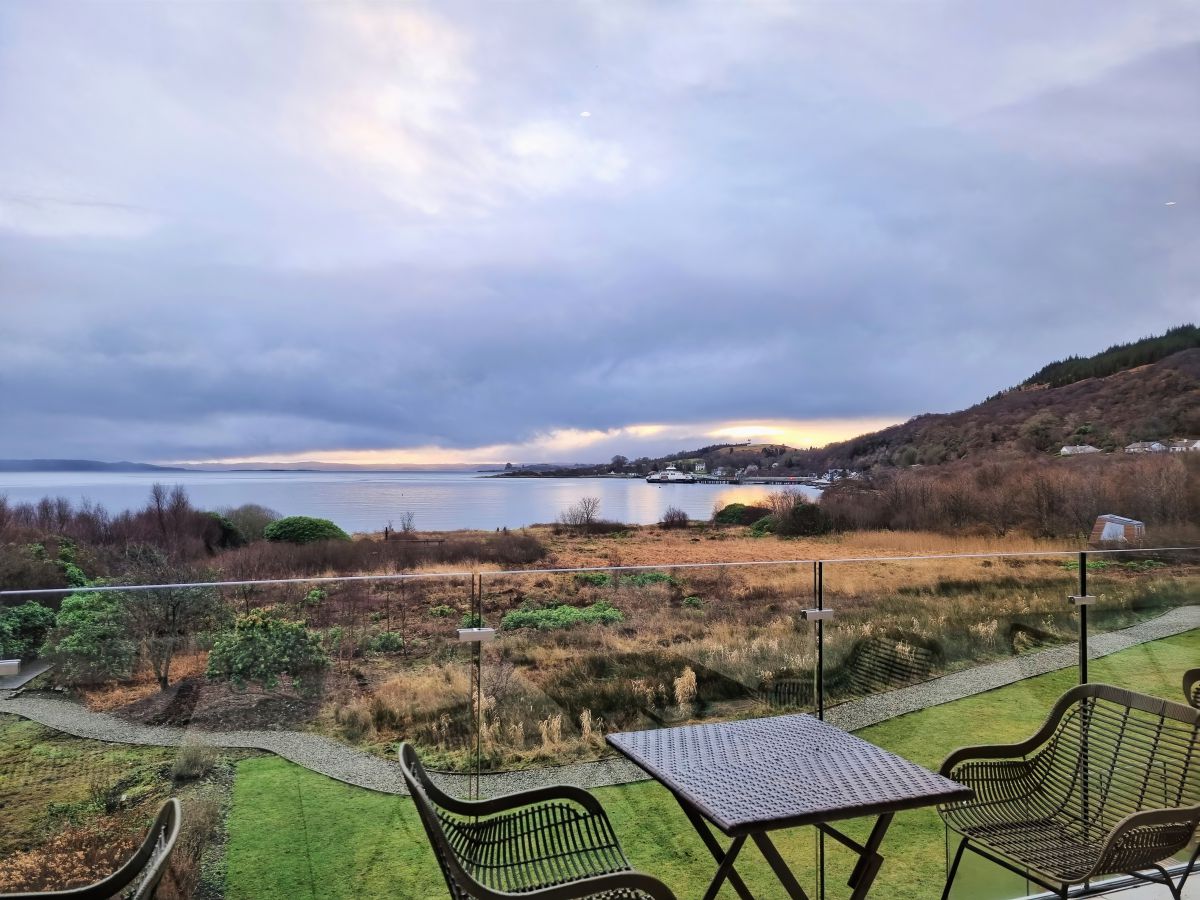
Address: Isle of Mull
Visitor Guide: The Isle of Mull: The Complete Guide
The Isle of Mull is the second-largest island in the Inner Hebrides. It’s located between Islay and Skye on the west coast and is easily reached via Calmac ferries from the ‘gateway to the isles’ town of Oban.
Mull is a popular summer tourist destination, but it’s nowhere near as busy as Skye, which is why I’ve included it instead of its more popular northern sibling. Skye is a beautiful island, but if you’ve ever been there in the middle of the summer, you know how difficult it is to get around due to the constant crowds of tour buses.
Mull, on the other hand, is almost as picturesque but has fewer visitors, and it’s one of the best islands in the Inner Hebrides to go wildlife-watching.
There are so many attractions on Mull it really is impossible to get bored but I would say the highlights are the coastal town of Tobermory, the spectacular mountain of Ben More and the historic Iona Abbey on the nearby Isle of Iona.
There are superb walking routes on Mull, especially on the northern side of the island which has stunning views across the Sound of Mull towards the mainland, and it’s there where you’ll have the highest likelihood of seeing Britain’s biggest bird, the white-tailed sea eagle.
Unlike many of the west-coast islands, there are indoor attractions on Mull to keep you occupied should the weather turn. Highlights include the Tobermory Whisky Distillery and the Mull Aquarium located next to each other in Tobermory, and Duart Castle on the eastern edge of the island which is up there with Eilean Donan and Dunrobin in my opinion.
Isle of Arran
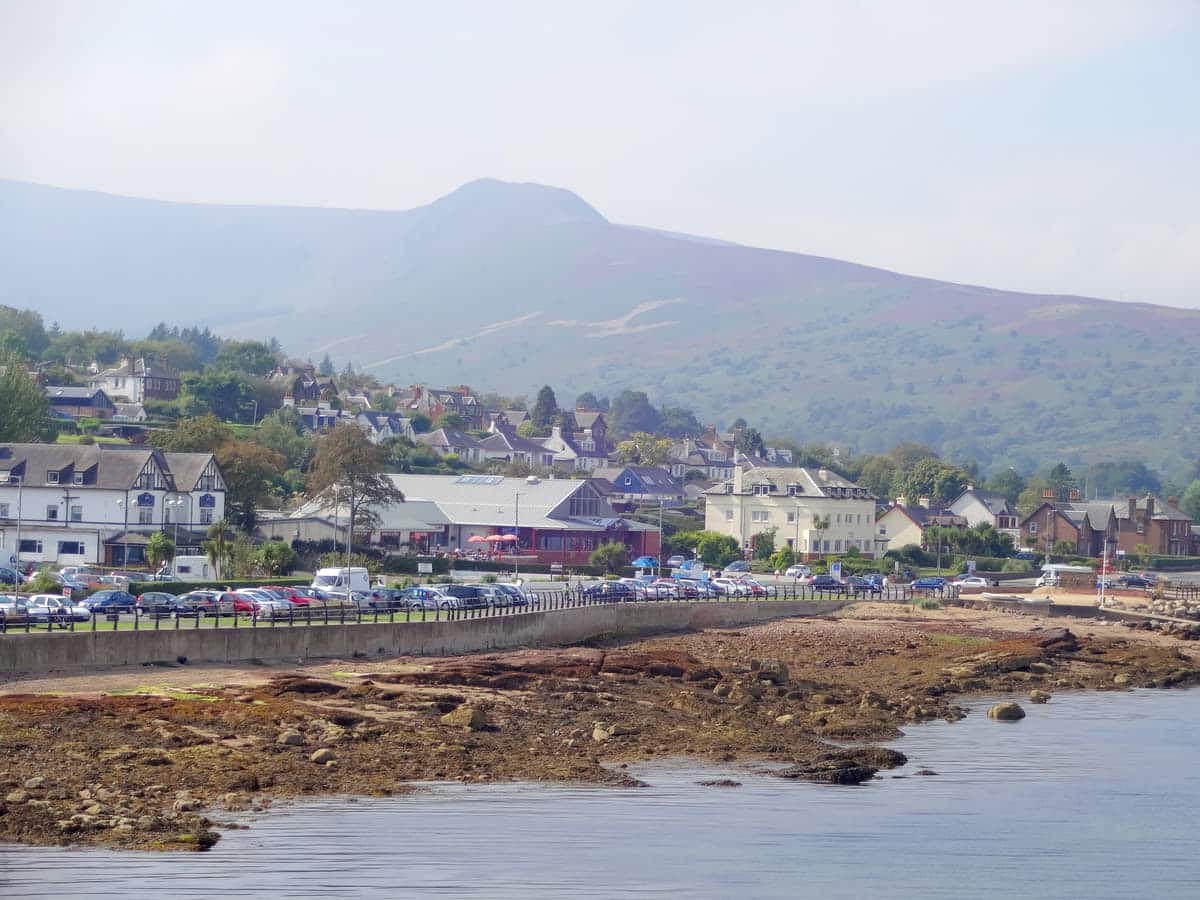
Address: Isle of Arran
Visitor Guide: The Isle of Arran: The Complete Guide
Out of all the islands in the Inner Hebrides, I’d have to say Arran is my personal favourite. It’s not as big as Mull or Skye and doesn’t have the distilleries of Islay or the beaches of Tiree, but it does have a little bit of everything in one compact island.
There’s a reason why Arran is affectionately called ‘Scotland in Miniature’. From the lush forests in the south to the brooding mountains in the north, this 167-square-mile island features an extraordinarily beautiful landscape.
It’s also one of the easiest west coast islands to get to thanks to its location in the Firth of Clyde, which sees regular ferries sailing in and out of Brodick every half an hour, which leads to the only negative I have, which is that due to its proximity to Glasgow, it’s a bit of a tourist trap.
Still, visit out of season when the weather is still decent (i.e. May and September) and you’ll find that Arran is one of the best places to go for a summer holiday in Scotland. Brodick is a lovely village that borders a very picturesque bay, but it’s not until you travel up the road a few miles that you realise how pretty the island is.
Cyclists, in particular, are spoiled with the Arran Coastal Way which offers stunning views along the 65-mile road that circles Arran, but walkers will be equally rewarded with a trip to the island thanks to trails that cross the landscape through thick forests in the south and mountains in the north.
The largest peak is Goatfell which has a surprisingly easy ascent for a 2,870-foot mountain and the views from the top are gob-smacking, but if you don’t feel up to it you can always stick to the forests in the southern half of the island which stretch inland for miles and are completely free of tourist crowds.
Alternatively, you’ll find a great place to kayak off Arran’s east coast at Lamlash Bay where it’s protected by the ultra-peaceful Holy Isle, while the flat landscape inland is perfect for horse riding adventures.
You’ll also find secluded beaches (Kildonan Beach and Sannox Beach are recommended) and if you like exploring history you’ll find Brodick Castle and Gardens on the east coast and the Machrie Moor standing stones on the western side of the island.
Isle of Tiree
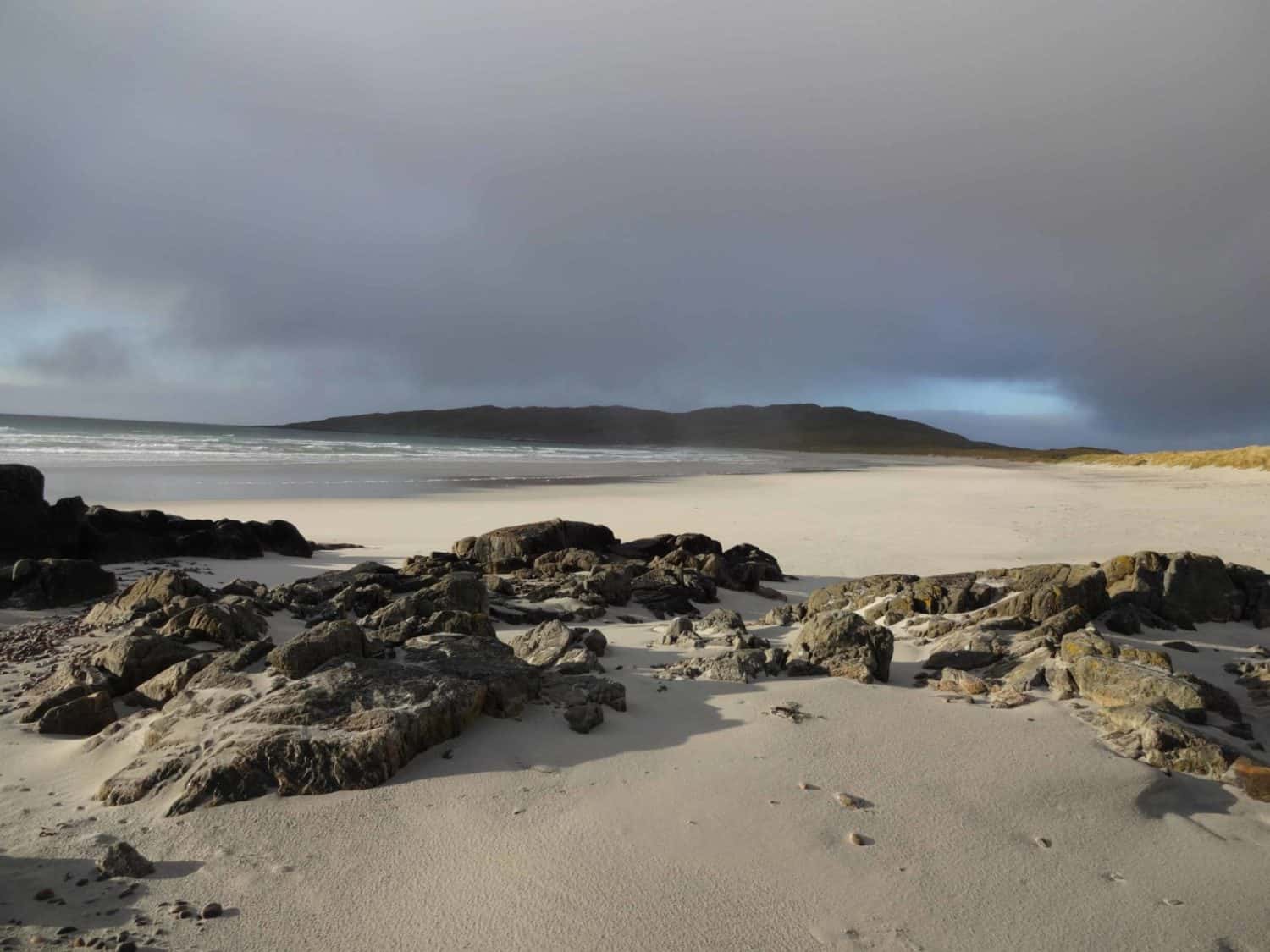
Address: Isle of Tiree
Visitor Guide: The Isle of Tiree: The Complete Guide
The Isle of Tiree is the most westerly of the Inner Hebrides, situated south of Skye and west of Mull. It’s not a particularly big island at a mere 30 square miles but it’s famed for its sweeping stretches of golden sand that have earned it the nickname ‘The Hawaii of the North’.
One of the things that makes Tiree unique is that it is very low-lying and is almost completely flat in places which means it succumbs to strong winds brought in from the Atlantic Ocean. Thankfully then, the island also has its own micro-climate that sees record amounts of sunshine (an average of 1,500 sunshine hours annually) and it’s a fact that Tiree frequently records more sunny days than anywhere else in the UK.
I’ve visited Tiree both in the summer and in the winter, and I can confirm it is most definitely a summer islandWinter sees temperatures plummet, and those cold winds make life quite unpleasant, but in summer everything changes, and the island really comes into its own.
Wide sweeping plains of Machar (Scottish grasses) are ablaze with the colours of wildflowers and when the wind drops it’s utterly idyllic, and that’s before you’ve been to the beaches.
There are 15 in total and all of them have golden, almost white sand and the bluest seas that wouldn’t look out of place on an exotic archipelago like the islands of Hawaii. Obviously, it won’t be as warm – expect 15/16 °C from June to August – but it’s every bit as pretty, with the bonus being there’s a superb festival to enjoy.
The Tiree Music Festival is staged annually near the beach at Crossapol (not far from Tiree airport) during the second week of July and it’s one of the highlights of the Scottish musical calendar. It’s a small festival but it’s great fun and you’ll find a range of bands playing throughout each day alongside delicious food stalls, craft beer and lots of activities for children.
There’s a decent-sized camping area as well as hook-ups for camper vans, but many people choose to set up a tent on the nearby beach instead. You’ll find more information about the island with these guides: The Isle of Tiree, The Tiree Music Festival and The Best Beaches on Tiree.
Frequently Asked Questions
How warm does it get in Scotland in summer?
Scotland is situated on the northern end of Great Britain so temperatures are generally a few degrees cooler than the rest of the British Isles. Scotland’s summer is between June and August. Average temperatures are:
June: High 17°C, Low 9°C.
July: High 19 °C, Low 11 °C.
August: High 19 °C, Low 11 °C.
What should I wear for a summer break in Scotland?
If travelling to Scotland’s cities in summer, wear normal clothes, i.e., a light top/T-shirt and lightweight trousers/shorts.
The evenings can cool considerably, so also take a light fleece and a packable waterproof jacket, as there are frequent showers in Scotland, even in the summer. If travelling to the Highlands, pack additional tops to create layers as the temperature drops towards zero at high altitudes.
How long are summer days in Scotland?
Scotland’s summer days are longer than the rest of the British Isles due to the country’s high latitude.
The longest day is the 21st of June but light and dark times vary depending on how far north you are. In Glasgow (central Scotland) the average sunrise and sunset times are (1st of the month):
June: Sun rises at 4.40 am. Sun sets at 9.50 pm.
July: Sun rises at 4.36 am. Sun sets at 10.05 pm.
August: Sun rises at 5.22 am. Sun sets at 9.23 pm.
How bad are midges in Scotland in summer?
It has been estimated that for every 2 square metres of ground where midges are known to breed, there are 500,000 eggs, for a total of 181 trillion midges in Scotland.
Walking through areas where midges breed can be very unpleasant, and they routinely cause holidaymakers to flee to other parts of Scotland. Estimates indicate that Scotland’s tourism industry loses up to £270 million annually due to midges.
Is Scotland worth visiting in summer?
Yes, Scotland is definitely worth visiting in the summer. The weather is generally mild with temperatures ranging from 15 to 25 °C and there are many outdoor activities to enjoy such as hiking, biking, and exploring the beautiful Scottish countryside.
There are also tons of festivals and events that take place in the summer such as Edinburgh’s world-famous Fringe. Plus, the long days mean you’ll have more time to enjoy the sights.


